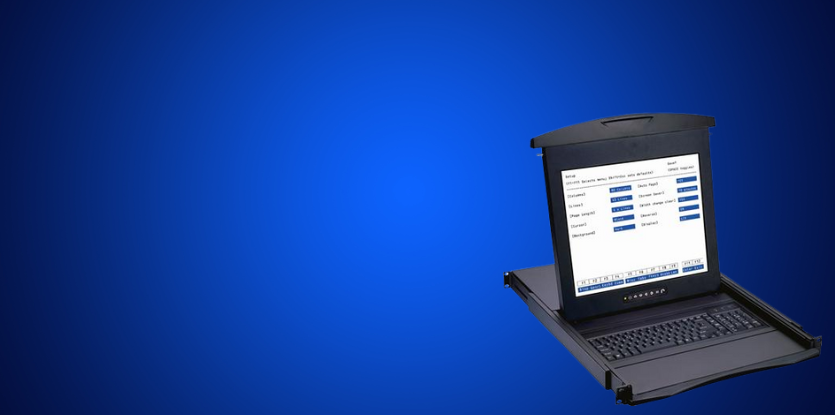What is a KVM Switch?
A Keyboard-Video-Mouse (KVM) switch is a device that enables users to control multiple computers using a single set of peripherals—keyboard, monitor, and mouse. This eliminates the need for multiple setups and allows seamless management of numerous devices from one centralized console.
KVM switches are widely used in IT management, server rooms, broadcasting, and even home offices where professionals need to access multiple machines efficiently. Whether you need a basic desktop KVM switch or a high-performance enterprise-grade solution, selecting the right one requires careful consideration of various factors.
Key Factors to Consider When Choosing a KVM Switch
1. Number of Computers (Sources)
The number of ports on a KVM switch determines how many computers or servers you can connect. Basic models support 2 to 4 computers, while advanced enterprise-grade KVM switches can handle 16, 32, or even hundreds of systems.
If your infrastructure is growing, consider a scalable KVM switch that allows cascading, enabling you to expand your system easily.
2. Number of Users
Some KVM switches allow only one user at a time, while others support multiple simultaneous users. If multiple administrators need access to the same infrastructure, a multi-user KVM switch with remote access capabilities is ideal.
3. Video Type and Display Support
Different KVM switches support various video formats. Common video input/output options include:
VGA – Analog signal, still widely used.
DVI – Digital format with better clarity than VGA.
HDMI – Common in modern setups, supports high resolutions.
DisplayPort (DP) – Ideal for 4K and multi-monitor setups.
USB-C & Thunderbolt – For high-speed connectivity and modern laptops.
If you work with high-resolution displays (4K UHD or higher), ensure your KVM switch supports the required resolution and refresh rate.
4. Single vs. Multi-Monitor Support
Are you using a single or multiple monitors per system? Some KVM switches support dual, triple, or quad-monitor setups, while others allow cascading to extend monitor support. If you need to view multiple systems simultaneously, consider a MultiViewer KVM switch.
5. Resolution & Performance
For graphic-intensive applications such as video editing, CAD, or financial trading, ensure your KVM switch supports:
4K Ultra HD at 60Hz
Low latency switching
Smooth frame rates without compression artifacts
6. Audio Support
Some KVM switches include built-in audio switching, allowing seamless transition of microphone and speaker connections between computers. This is especially useful for media production, gaming, or video conferencing setups.
7. USB Peripheral Support
Beyond keyboard and mouse, some KVM switches offer additional USB ports to connect:
External hard drives
Flash drives
Graphic tablets
Joysticks & game controllers
Bluetooth dongles
For added flexibility, USB hub-enabled KVM switches allow devices to remain active when switching between systems.
8. IP-Based vs. Local KVM
Local KVM Switches – These are traditional KVMs that require a physical connection between the user and computers.
KVM-over-IP (Remote Access) – Allows users to control systems from anywhere in the world via a secure internet connection. Ideal for data centers, enterprise IT management, and remote troubleshooting.
9. Cat5/Cat6 KVM Switches (Long-Distance Connectivity)
Using Cat5, Cat6, or Cat7 cables allows you to place computers and user stations further apart while reducing cable clutter. These high-density switches are ideal for large-scale IT infrastructure and server management.
10. Security & Authentication
If security is a concern, look for secure KVM switches that support:
User authentication (LDAP, Active Directory, RADIUS, TACACS+)
NIAP-certified encryption (for government & financial institutions)
Tamper-proof firmware & hardware isolation to prevent cyber threats
11. Remote Power Management Integration
For server environments, integrating power control with your KVM switch allows administrators to reboot machines remotely. Some advanced KVM switches integrate with Intelligent Power Distribution Units (PDUs) for remote system power cycling.
12. Serial Device Support
If you need to control routers, UNIX servers, or industrial control systems, look for a KVM switch that supports serial devices through RS-232 or specialized dongles.
13. Bandwidth & Performance Optimization
For KVM-over-IP solutions, network bandwidth plays a critical role in performance. Higher compression technologies allow smoother operation while reducing lag in high-traffic environments.
Conclusion: Choosing the Best KVM Switch for Your Needs
Selecting the right KVM switch depends on your specific requirements, budget, and use case. Whether you’re an IT administrator managing servers, a trader using multi-monitor setups, or a creative professional needing seamless access between machines, there’s a KVM switch designed to optimize your workflow.If you need expert advice on selecting the best KVM switch for your setup, contact KVMSwitchTech today! Our team of professionals is ready to help you find the ideal solution for your business or personal needs.

